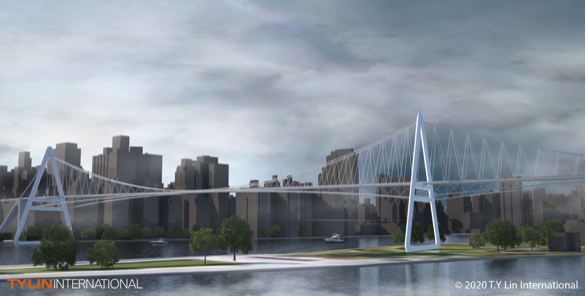Excerpt from a NY Times Article by Winnie Hu
A group of transportation experts want to build a new bridge in New York City to accommodate a surge in cycling.
New York City has taken street space away from cars for dozens of pedestrian plazas and for hundreds of miles of bike lanes that make up the largest urban bike network in the nation.
It has significantly expanded those efforts during the coronavirus pandemic, adding more than 40 miles of open streets for pedestrians and cyclists.
A new proposal calls for the city to build the first new bridge to Manhattan in decades — one just for cyclists and pedestrians.
The car-free bridge would connect Midtown Manhattan to Long Island City in Queens.
The bridge would also link to Roosevelt Island.
Called the Queens Ribbon, the $100 million bridge would be narrower than one designed for cars and would resemble a relatively thin line across the East River, according to the proposal, which was developed by a group of transportation engineers led by Samuel I. Schwartz, a former city traffic commissioner.
London, Paris, Singapore and other cities have built car-free bridges as part of a global movement to make more room for people in urban streetscapes.
The Queens Ribbon would serve the growing bike and foot traffic in Manhattan’s central business district
Cycling has surged in recent months as people have traded in the potential health perils of subway and bus rides for those of bike lanes. Citi Bike, the city’s bike-share program, averaged 63,481 daily rides for June 15-17, up 45 percent from June 1-3, according to Citi Bike data.
Still, the bridge proposal faces big hurdles. It would require city and state approvals, and a hefty investment at a time when the pandemic has plunged the city into its most dire fiscal crisis in generations. Mr. Schwartz said the new bridge could potentially be funded with private money through a public-private partnership.
His group sees the Queens Ribbon as the first of three pedestrian-and-bike bridges. The other two, which are still being developed, would link Lower Manhattan and Brooklyn, and Manhattan with New Jersey across the Hudson River. Each bridge would be 20 feet wide, and could carry up to 20,000 people a day.




